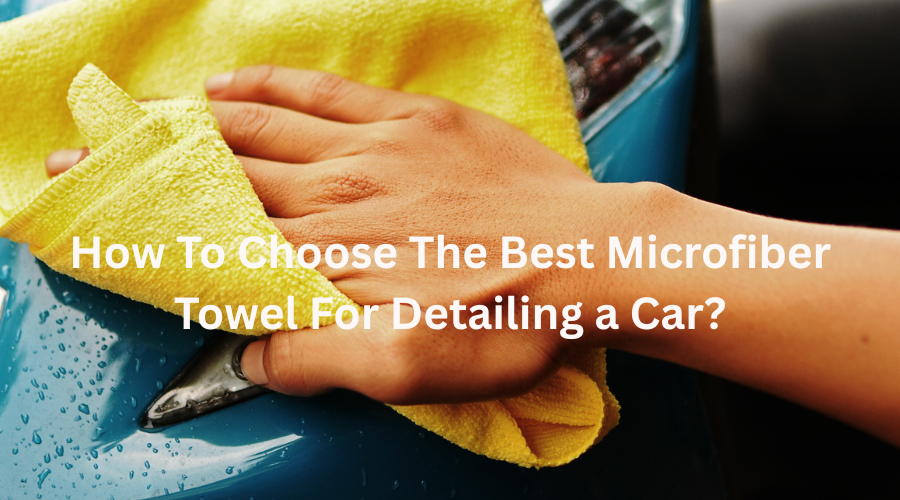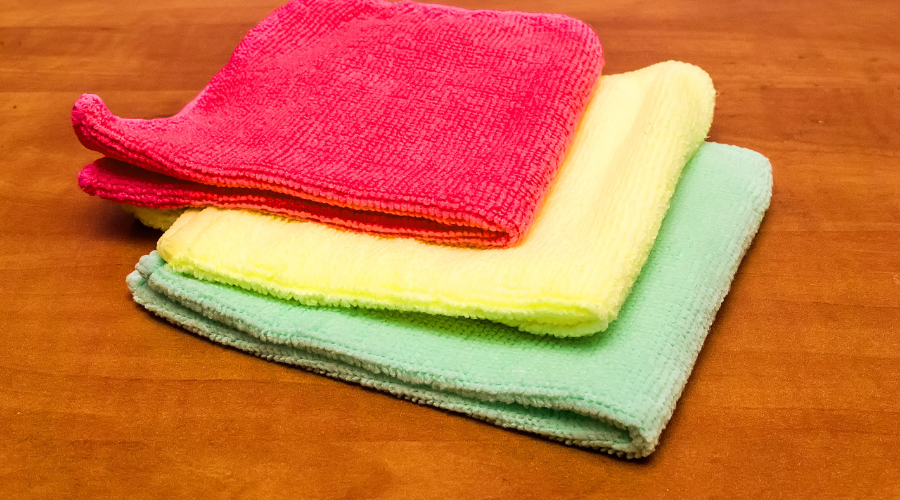
Oct 31,2025
To maintain a car's appearance, soap and water are not sufficient. The products you put on are just as important as the tools you use to apply them. Among all the detailing products on the market, microfiber towels have become the favorite choice of car lovers and naturally detail-oriented people. However, microfiber towels do not equal. The wrong one will result in a perfect finish, whereas the right one will leave you with scratches that you will long to make.
Microfiber towels are produced out of very fine artificial fibers, which are far finer than human hair. These minute fibers form millions of small holes that are effective at holding dirt, dust, and moisture. This design renders them much better than ordinary cotton towels for car detailing work.
The secret of microfiber is in its composition. During production, every fiber is divided, resulting in a star-like cross-section. The splitting process greatly increases the towel's surface area, enabling it to collect and retain more particles rather than dragging them across the paint surface. This is the reason why microfiber towels are more practical and tender than ordinary towels.
When purchasing microfiber towels, you will see a figure with a GSM behind it. This is grams per square meter, which is the weight and thickness of the towel. It is because learning about GSM allows you to choose the appropriate towel to use in every detailing job.
Lightweight towels have a GSM of 200-350. These are efficient with windows, mirrors, and interiors. The medium-weight towels fall within the GSM range of 350 to 500 and can be used for most detailing tasks. Towels of 500-800 GSM or above are fluffy and absorbent towels that are great at drying a vehicle or using them to apply car wax.
Being thick does not necessarily mean being good. A heavy towel will leave streaks, and a light one will not dry much water.
The pile is the value that describes the length of the fibers on the towel. Short-pile towels have fibers around 3-5mm long, while long-pile towels may have fibers up to 10mm or more. Each type is used in car detailing.
Glass can be cleaned with short-pile, smooth-textured towels used to remove polish or wax residue. They have an even surface that does not streak behind. Long pile towels are softer and more absorbent, hence very useful in drying and applying any liquid product. The extended fibers leave a bigger hole to entrap water and dirt at a safe distance from the paint.
The towels woven in a waffle create a special kind of texture that enhances the absorbency. These dry well because the weave creates more pockets, trapping more water. They are, however, not suitable for applying the products, as the texture results in uneven application.

Take a closer look at the rims of a microfiber towel. Others have open sides, and the raw material is visible. The others are lined with silk or satin at the borders. This little detail is far more important than you may imagine.
Exposed-edge towels may be grainier and can easily scar delicate surfaces if you are not careful. Towels with a silk border or no edges would provide an extra layer of protection against accidental scratches. In work on painted surfaces, towels with finished edges can provide greater safety when finishing your car.
Professional detailers tend to use various colored towels for multiple tasks. This isn't just for looks. It is an efficient system that eliminates cross-contamination and protects your car's finish.
Wires and tires, exterior paint, windows, and interior surfaces are sponged with a separate towel to avoid dirtying and chemicalizing other parts with the dirt and chemicals in that area. Wheels and tires should be wiped with a colored towel to conceal stains. Light colors would suit paint since you know when they are getting dirty and require replacing.
Microfiber towels are usually made by combining polyester and polyamide. The correlation of these two materials influences the performance of the towel. Usual blends are 80/20, 70/30, 50/50, where the first is polyester and the latter polyamide.
Increased polyamide content also tends to imply increased absorbency and reduced texture. The most universal is an 80/20 mix, applicable in most cases. Polyamide towels are more expensive, but they also provide better performance when doing critical sections, such as final buffing of the paint or drying of the paint.
Not every microfiber towel is of professional quality. Look out for a few quality pointers when purchasing. Good towels must be soft when touched, with no harsh or scratchy spots. Inspect the towel under a light and determine whether it has any weaving in good condition, without thinness or holes.
Quality towels are also well-sewn and do not tangle after several washes. Never use towels with loose ends or smooth ends. It can be informed by reading reviews left by other detailers, by finding out which brands stand the test of time.
The best microfiber towel selection is reduced to options based on your detailed requirements. The first step is to identify which tasks you use most frequently, then choose towels with the right GSM, pile length, and size.
Serious detailing work, however, makes it worthwhile to build a collection of various types of towels. Using the correct towel for different tasks is a better way to get the optimal results and cleaning of a car finish as well. Investing in quality microfiber towels saves money because your car detailing results will always look professional.
Q: What will be the number of times that a microfiber towel can be reused before washing it?
A: Replace your towel when it will become incredibly grimy or wet. Remember to clean it after every detailing session to prevent dust buildup that would scratch your vehicle's paint.
Q. Is it possible to wash microfiber towels using normal laundry?
A: No, microfiber towels not be washed with fabric softener or bleach, as those products damage the fiber structure and decrease their effectiveness.
Q: Are more expensive microfiber towels more effective?
A: Yes, better towels are usually better made, have a higher GSM rating, and use higher-quality materials that will last longer and provide safer and more effective cleaning on your car's finish.